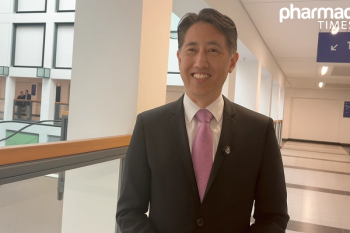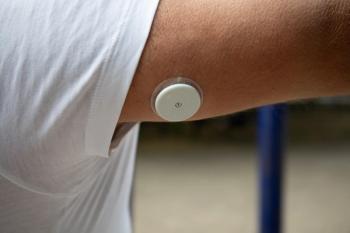
PFAS Exposure Tied to Greater Weight Regain After Adolescent Bariatric Surgery
Key Takeaways
- Adolescents with higher PFAS levels before bariatric surgery tend to regain more weight and have larger waist sizes over 5 years.
- PFOS, PFHxS, and PFHpS are consistently linked to adverse weight-related outcomes, affecting BMI and waist size post surgery.
New findings highlight environmental impacts on weight management.
New research following adolescents for 5 years after they had bariatric surgery found that teens with high blood levels of perfluoroalkyl and polyfluoroalkyl substances (PFAS) chemicals before surgery tended to gain more weight back and have larger waist sizes later, compared with those with lower levels of PFAS. This research shows how the environment plays a role in the results of weight surgery in young people over time.¹
The study looked at 186 adolescents from the Teen-LABS group who had bariatric surgery between 2007 and 2012. Their weight, body mass index (BMI), and waist size were obtained before surgery and after at approximately 6, 12, 36, and 60 months. Investigators measured presurgical plasma concentrations of 7 PFAS and modeled postoperative trajectories using linear mixed-effects approaches and mixture analyses. The team found that perfluorooctanesulfonic acid (PFOS), perfluorohexanesulfonic (PFHxS), and perfluoroheptane sulfonate (PFHpS) were most consistently linked with adverse weight-related outcomes over time. At PFOS levels around 1.45 to 2.94 log2 ng/mL, annual BMI gain increased from 1.34 to 1.84 kg/m2. The models also showed the combined adverse effects of sulfonic-acid PFAS.1,2
PFAS are persistent, manmade chemicals that can disrupt endocrine signaling and metabolic pathways, which include systems dealing with fat production and energy balance, demonstrating why higher PFAS levels before surgery might make teens gain weight quickly as their bodies adjust to a new steady state after surgery. Other studies on teens who had weight loss surgery show that PFAS levels in blood can change after surgery; this points to a 2-way link between weight change and how PFAS move and act in the body.3 In adults trying to lose weight through lifestyle changes, higher PFAS levels have been tied to more weight gain and lower resting metabolism rates, hinting that PFAS may harm the way weight is managed across different ages.4
Interpreting the Results
These results do not imply that PFAS exposure will definitely result in regained weight, but they do raise practical questions for adolescent bariatric health plans. Care teams may want to add more long-lasting help methods for adolescents thought to be highly exposed to PFAS, work with primary care and environmental health teams to lower household and community exposures, and educate families on factors other than diet and exercise to shape long-term health. The data bolster ongoing calls to limit PFAS in water and food-contact sources, given that exposure reduction is a modifiable, population-level strategy that could indirectly support metabolic health after surgery.1,2
As with most observational analyses, residual confounding cannot be fully excluded, and PFAS were measured at baseline rather than continuously throughout follow-up. However, the use of repeated anthropometry over 5 years, mixture modeling, and the convergence of associations across multiple sulfonic-acid PFAS strengthen confidence in the signal. The work also dovetails with prior evidence that PFAS burdens relate to weight dynamics in other settings, lending external plausibility. Future research priorities include establishing exposure thresholds of greatest concern, testing whether PFAS reduction strategies influence postsurgical trajectories, and evaluating whether pharmacologic adjuncts (eg, antiobesity medications) attenuate any PFAS-related disadvantage in weight maintenance.
Conclusion
For adolescents, bariatric surgery works well for severe obesity, but environmental exposures like PFAS can affect how long they keep the weight off. The Teen-LABS study shows a strong link between high PFAS amounts before surgery and bigger weight gain and stomach fat over 5 years. This could lead clinicians and policymakers to think about the bigger picture, using what they know about the environment to help maintain the weight loss after the surgery.
REFERENCES
Teens with higher blood levels of PFAS regain more weight after bariatric surgery, study finds. EurekAlert! Published August 14, 2025. Accessed August 14, 2025.
https://www.eurekalert.org/news-releases/1094476 Baumert BO, Costello E, Li Z, et al. PFAS Exposure and Postoperative Weight Regain in Adolescents After Bariatric Surgery: Findings From the Teen-LABS Study. Obesity (Silver Spring). Published online August 14, 2025. doi:10.1002/oby.70009
Baumert BO, Eckel SP, Goodrich JA, et al. Changes in plasma concentrations of per- and Polyfluoroalkyl substances after bariatric surgery in adolescents from the Teen-Longitudinal Assessment of Bariatric Surgery (Teen-LABS) study. Sci Total Environ. 2024;930:172840. doi:10.1016/j.scitotenv.2024.172840
Liu G, Dhana K, Furtado JD, et al. Perfluoroalkyl substances and changes in body weight and resting metabolic rate in response to weight-loss diets: A prospective study. PLoS Med. 2018;15(2):e1002502. Published 2018 Feb 13. doi:10.1371/journal.pmed.1002502
Newsletter
Stay informed on drug updates, treatment guidelines, and pharmacy practice trends—subscribe to Pharmacy Times for weekly clinical insights.


















































































































































































































